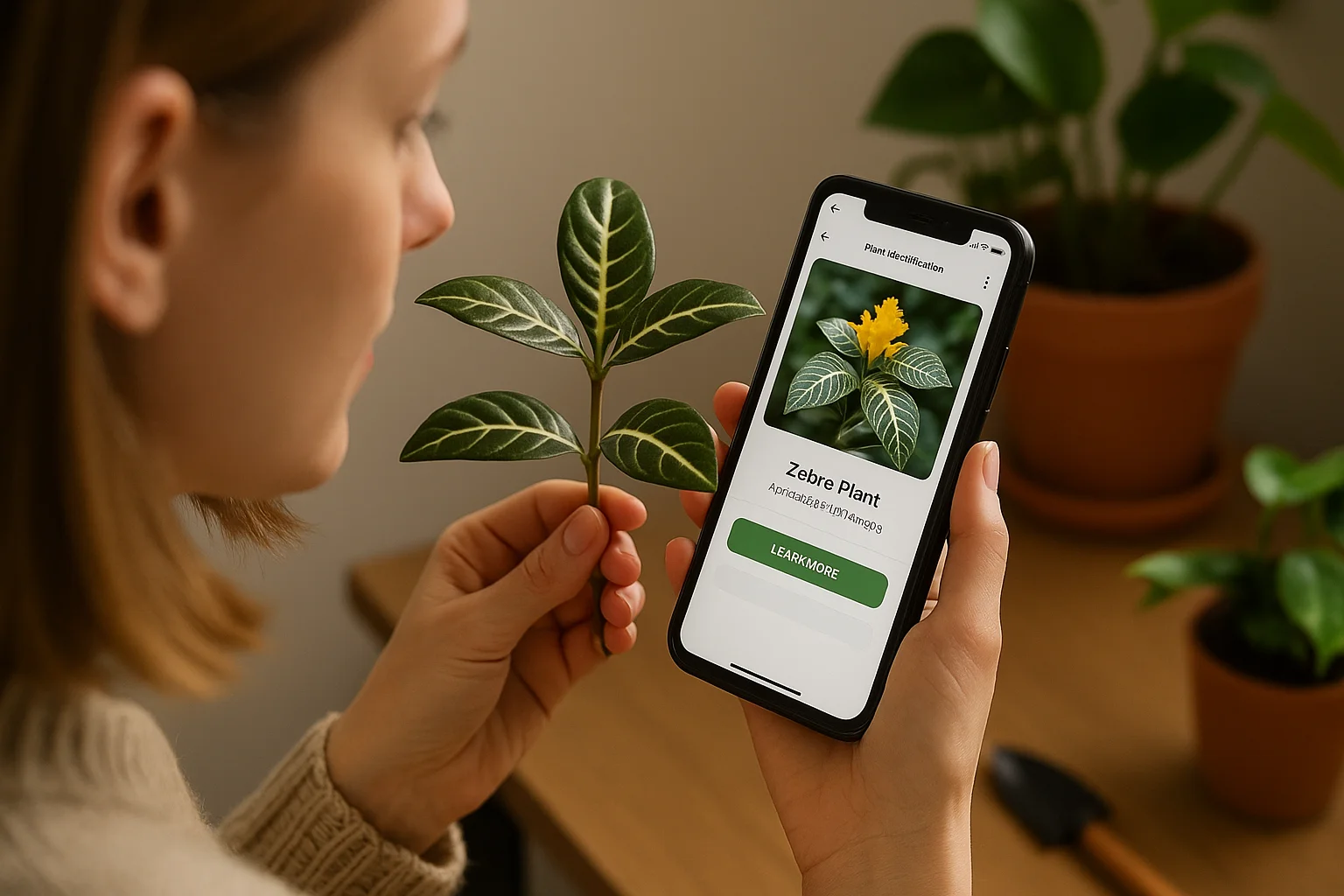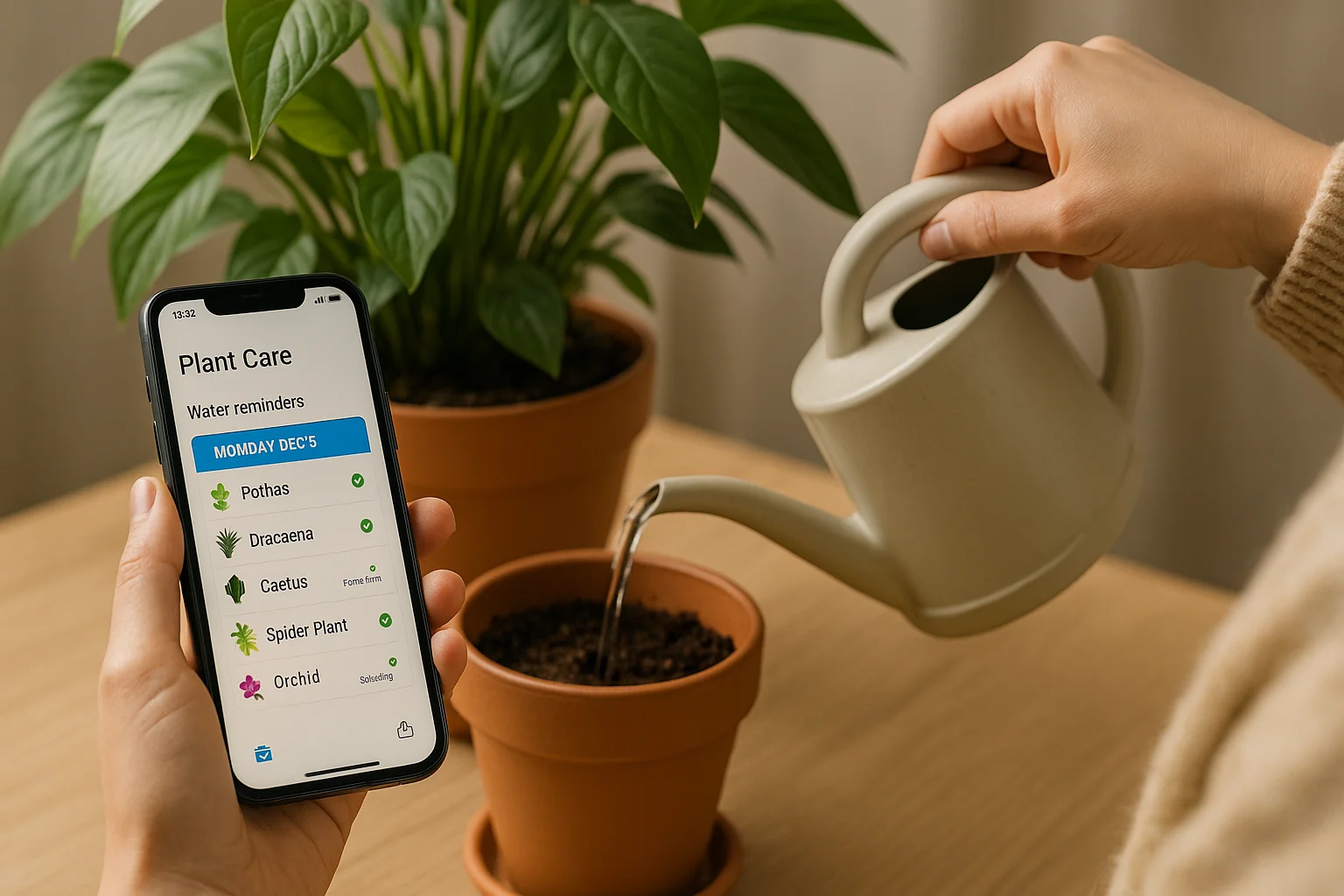Walk into almost any home today and you’ll find at least one leafy companion sitting on a shelf, a desk, or by the window. Some of these plants arrive with neat labels, others are gifted, swapped, or adopted without a name. And that’s where the guessing game begins: is it a peperomia or a pilea, a philodendron or a pothos? The difference matters, because their care isn’t the same.
That’s why tools that allow plant identification by picture have become so popular. A quick snapshot can reveal a plant’s name, its quirks, and often its care rhythm. But curiosity doesn’t end there. Gardeners and casual plant parents alike have questions: How good are these apps at telling plants apart? Do they work with poor lighting? Are photos safe once uploaded?
Let’s go through the most practical, frequently asked questions and give clear answers.
Will a Quick Phone Snapshot Be Enough for Accurate ID?
Most people wonder if they need a professional camera or perfect daylight. The truth is, modern apps are surprisingly forgiving, but not all photos are equal.
A quick shot under indoor light usually works, but accuracy jumps when the photo captures clear details. Blurry, shadowed, or overexposed images can confuse the app because many species share similar silhouettes. A pothos vine and a philodendron heartleaf, for example, look alike at first glance, and poor lighting can blur the subtle differences in leaf shape.
How to improve your chances:
Take the photo in natural light, avoiding harsh sun that washes out patterns.
Capture a close-up of the leaf surface as well as the whole plant.
Try a second angle: stem joints or flowers often reveal what leaves alone don’t.
Think of it like showing the app what you’d show a botanist if you wanted a correct answer.

Can an App Really Tell Apart Look-Alike Plants?
This is one of the biggest concerns. Plants often mimic one another as part of their evolutionary success, and houseplant sellers sometimes mix up names.
Apps rely on thousands (sometimes millions) of photos in their database. They don’t just “see green” — they analyze patterns in leaf veins, edge shapes, stem texture, even growth style. This helps separate, for instance, a young schefflera from a dwarf umbrella tree, or distinguish between a jade plant and a small-leafed succulent from another genus.
Still, there are limits. Two varieties of dracaena might be nearly indistinguishable by photo alone, especially if one is a cultivar bred for home use. In those cases, apps usually give the closest few options.
Pro tip: when you get multiple suggestions, don’t panic. Cross-check them by reading the descriptions. Does one option mention red stems, while your plant has only green? Details like these help you confirm the right ID.
Do I Need Internet, Or Can These Apps Work Offline?
Here is where expectations meet reality. Most plant ID apps lean heavily on cloud computing. Your photo is uploaded, compared against a vast database, and then matched with the closest species.
Without internet: some apps will still attempt recognition if they store a small offline library. But these libraries usually cover common houseplants only and lack updates. A plant lover with a tropical import or a rare variety will often hit a dead end offline.
What does work without Wi-Fi are the care tools many apps provide. Reminders for watering, pruning schedules, or saved plant profiles are stored locally. You can still open your “digital garden” without a signal.
In short: for identification, the internet is usually required; for ongoing care, most features can run offline.
What Happens If The App Gets It Wrong?
Every tool, no matter how smart, can make mistakes. Rare species, hybrids, or plants with damage (yellowed leaves, trimmed stems) may confuse recognition.
When the app gives a result that doesn’t seem to fit, treat it as a lead rather than a verdict. Look at the care notes: if your “identified” cactus supposedly needs daily misting, that’s a red flag.
Ways to cross-check:
Save the top two or three suggested names. Compare them with your plant over time.
Check trusted plant communities or forums where owners share photos.
Observe growth: a plant labeled as “low light” that thrives only in sun probably isn’t what the app suggested.
This process of checking also makes you a more observant plant owner, turning a mistaken ID into a learning opportunity.
How Does the Technology Behind Plant ID Apps Work?
Many people think it’s magic when a phone tells them the species in seconds. The real answer is a common work of computer vision and massive data.
Apps use algorithms that “read” a photo like a set of features: edges, colors, vein patterns, ratios of length to width. These features are compared with an enormous library of labeled images. The more diverse the library — plants photographed in different seasons, light conditions, and growth stages — the better the app performs.
Crowdsourced uploads play a role too. Every time users photograph their plants, the app’s database grows and quality control filters weed out poor matches, ensuring accuracy doesn’t drop.
This explains why some apps improve over time: they aren’t static and constantly learning from new data. The same plant that was once “unknown” might now be identified correctly because others uploaded similar photos.

Do Plant ID Apps Help With Care, Or Only Give Names?
Not all apps are built the same. Some stop at identification, leaving you with the plant name and little else. Others go further and act like digital assistants.
Features vary widely:
Watering reminders: set by species or by your custom schedule.
Light analysis: measure brightness with your phone camera to see if a spot is suitable.
Fertilizer tracking: log when you last fed a plant.
Disease recognition: flag leaf spots or discoloration that may indicate pests or fungi.
For beginners, these extras are often more valuable than the name itself. Knowing that your croton is thirsty every five days in summer, but every twelve in winter, saves many from overwatering.
Some apps even let you keep a virtual collection, a little “digital greenhouse,” where each plant has its card, photo history, and care log. That way, you are not just naming plants but building a personalized guidebook.
How Do I Choose The Right Plant ID App for Me?
Not every plant parent has the same needs. Some want pure identification; others prefer a full care toolkit. Choosing the right app depends on what you value most.
Criteria worth checking:
Accuracy: Does the app handle both common and unusual species? Reviews often reveal this.
Interface: A clean, simple design makes you more likely to actually use it.
Extras: Tools like a Light Meter, Water Calculator, or personal plant diary add long-term value.
With dozens of plant apps on the market, it’s easy to feel lost. The best way is to look at accuracy, ease of use, and extra tools that make daily care simpler. Here’s a quick top-3 comparison of apps that plant owners often rely on:
App | Strengths | Limitations | Best For |
AI Plant Finder | ~97% accuracy, over 300,000 plants in the database, also diagnoses diseases by photo, plus tools like Light Meter, Water Calculator, and My Garden Tool for reminders. | Requires internet connection to access the full database. | Plant owners who want more than ID — a daily helper for real care management. |
PlantSnap | Large database, quick recognition speed, popular worldwide. | Interface can feel cluttered, ads in the free version. | Beginners who want a fast, basic answer. |
PictureThis | Clean design, high accuracy on common plants, offers general care tips. | Subscription needed for advanced features, care tips can be generic. | Users who want simple IDs plus light guidance. |
Tip: Try two or three apps side by side. After a few weeks you’ll notice which one feels most reliable and easiest to integrate into your routine. For most, it’s worth investing in a premium plan once you’ve chosen the one that fits your style — especially if you want to manage a whole indoor jungle, not just identify the occasional flower.
Is It Safe to Upload Plant Photos — What About Privacy?
Data safety is a growing concern, and rightly so. Most apps anonymize photos, meaning your snapshot of a snake plant won’t be linked to your identity. But reading the privacy policy matters.
Some free versions may use photos for database training. This isn’t usually harmful, but if you’re uncomfortable, stick with apps that clearly state your images remain private.
Also, be mindful of permissions. An app asking for access to your location or contacts when it only needs your camera is overreaching. You can still use it, but disable unnecessary access in your phone settings.
Rule of thumb: treat plant apps like any other mobile service. A cautious attitude — granting only essential permissions — keeps your data safer without losing functionality.
From Snapshots to Smarter Care
Plant ID apps aren’t perfect, but they’re powerful allies. They shrink the gap between curiosity and knowledge, turning a nameless green stranger into a plant with a history, needs, and rhythm. And be you are testing a half-blurry photo of a gift plant or logging a collection of thirty species, these apps bridge everyday habits with practical guidance. So, use them wisely, cross-check when needed, and pair their insight with your own observations.
